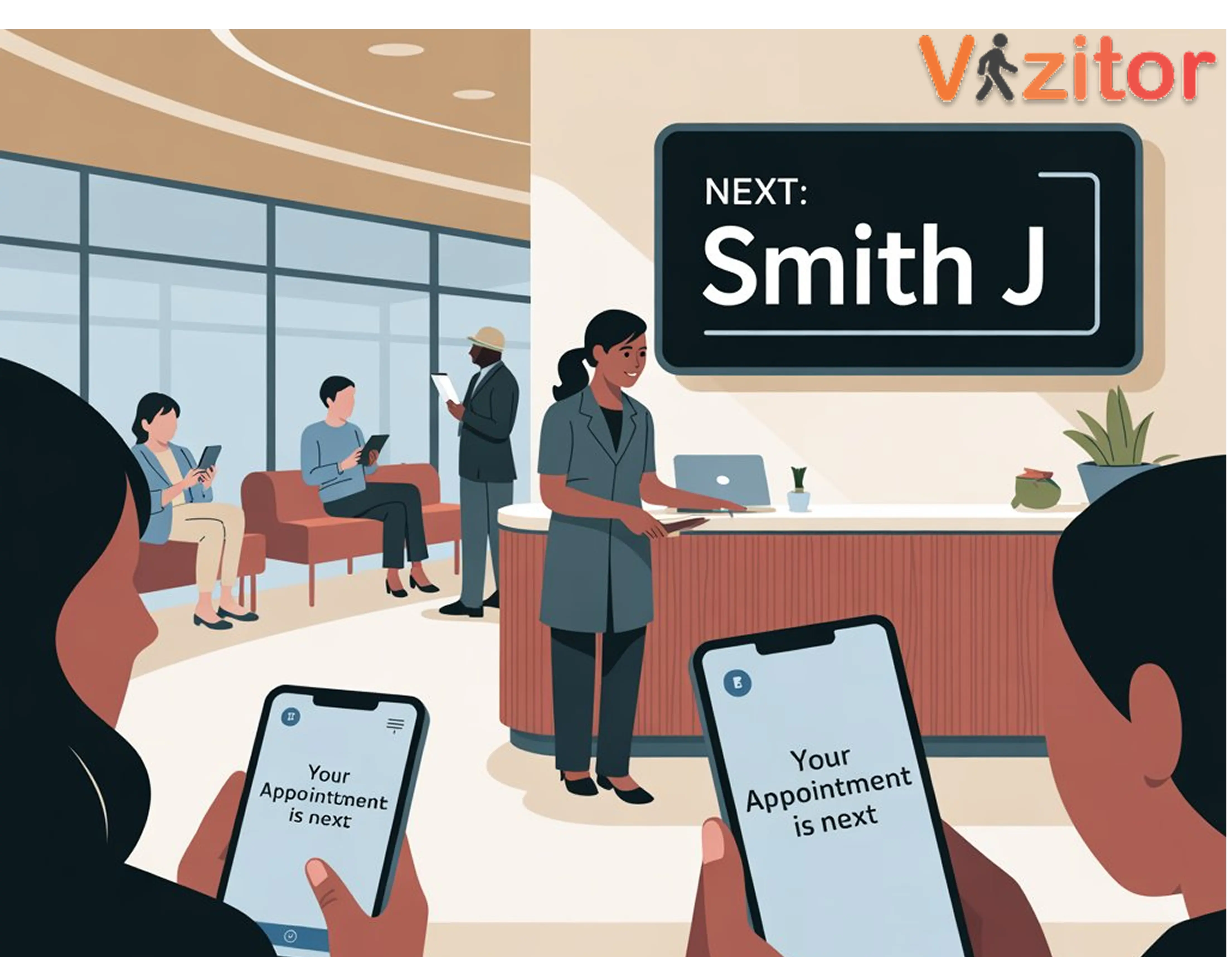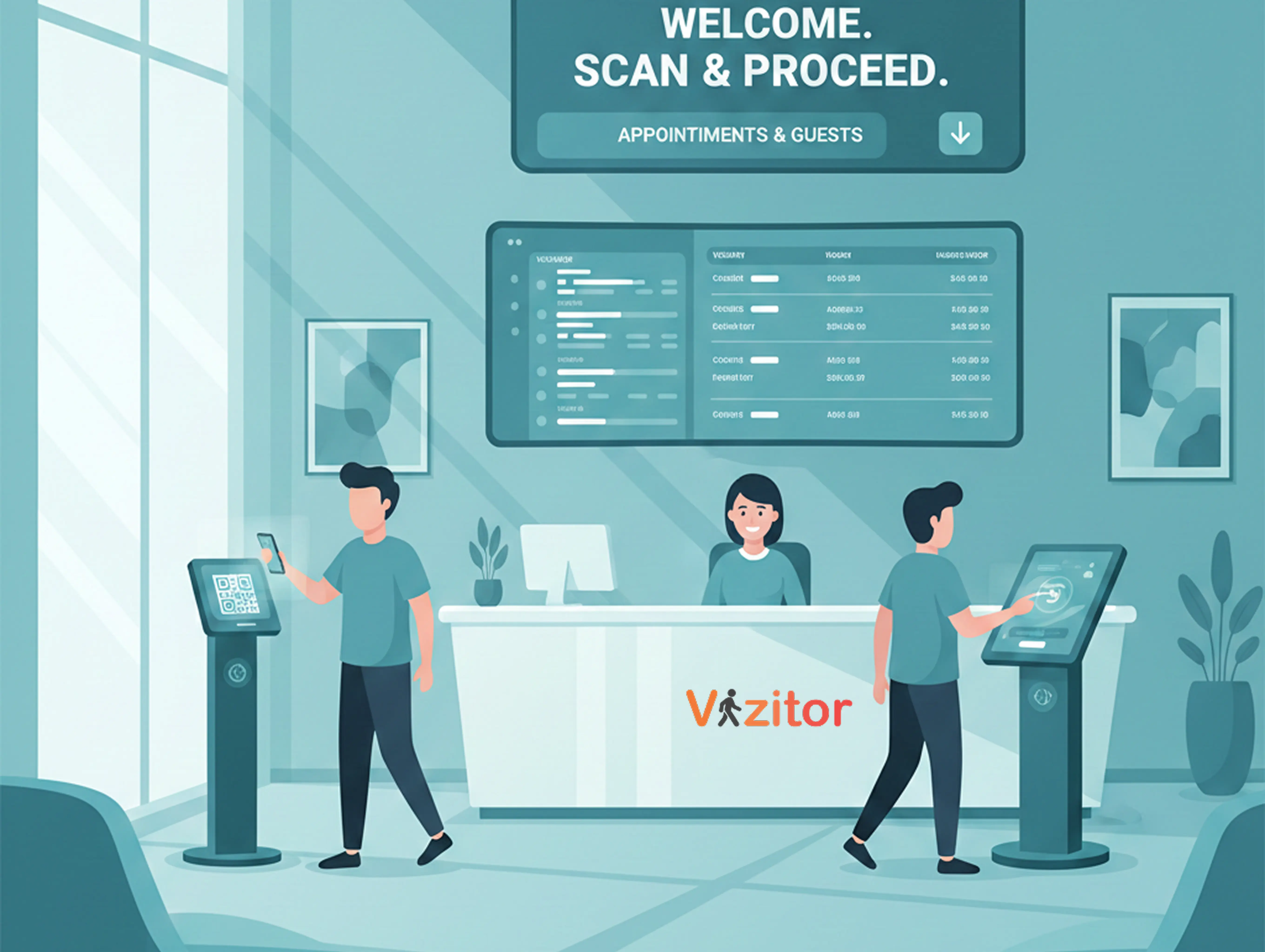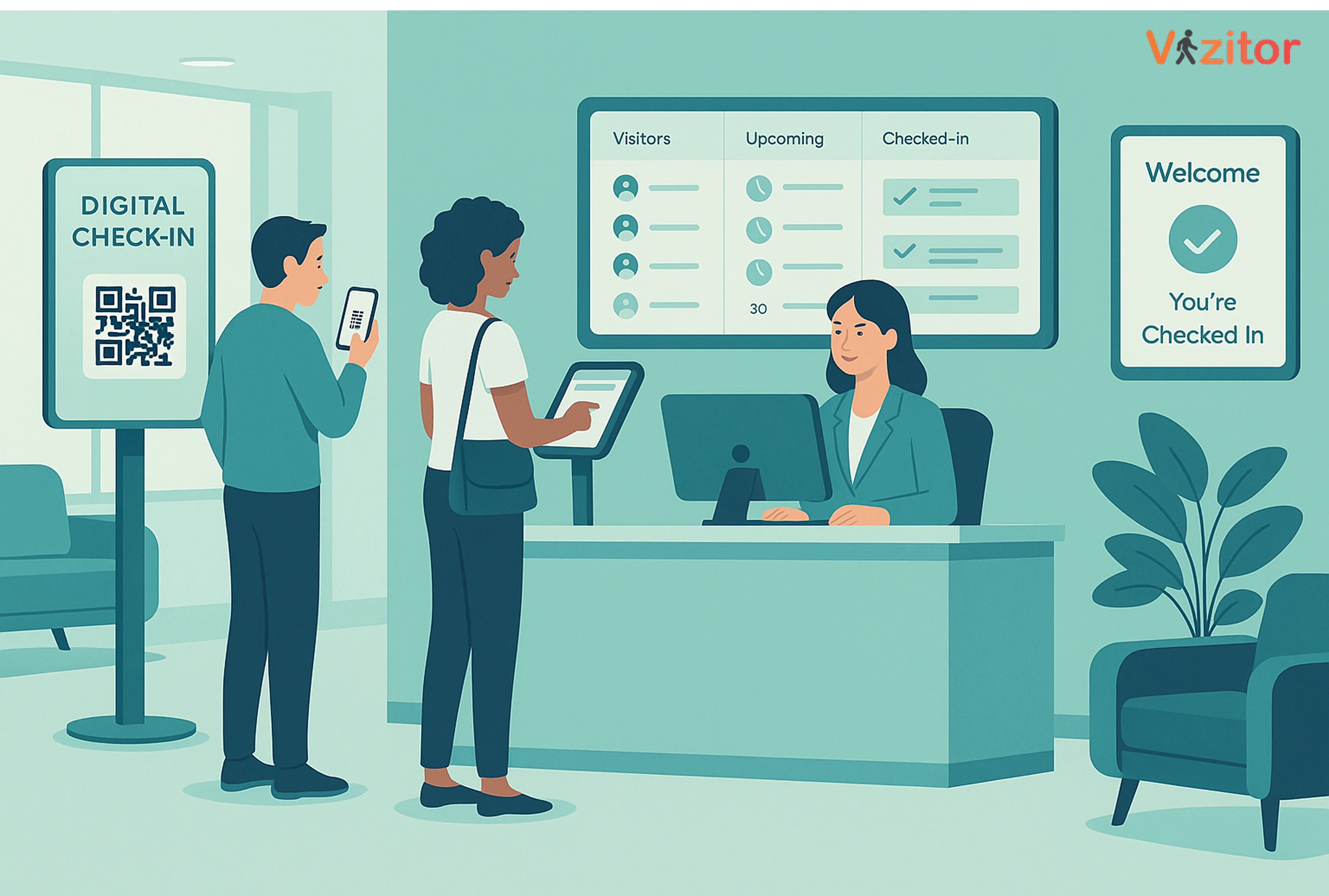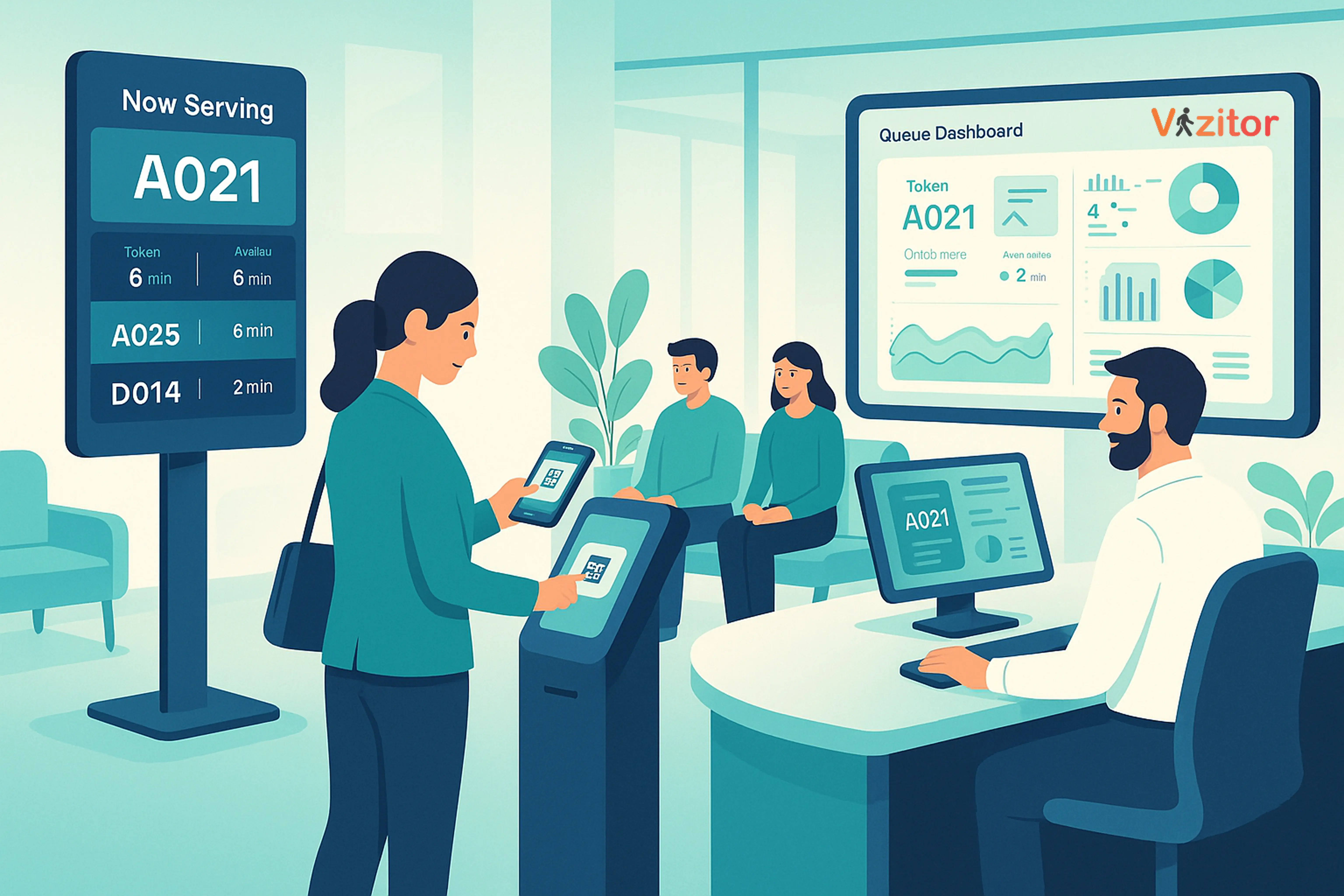Guide to Choosing the Perfect Queue Management System
Efficient queue management is no longer optional, it's essential. This guide explores how a QMS can reduce wait times, boost customer satisfaction, and empower staff, with practical tips for selecting the perfect solution.

Table of Content
Try Vizitor for Free!

Published on: Mon, May 13, 2024
Last updated: 2025-09-24
Read in 5 minutes
Introduction
Long, frustrating queues are more than an inconvenience, they can drive customers away and strain staff. In today’s fast-paced, experience-driven world, businesses need a Queue Management System (QMS) to streamline visitor flow, improve satisfaction, and unlock operational efficiency.
Choosing the right QMS, however, can be overwhelming. There are multiple solutions, each with unique features and capabilities. This guide provides a step-by-step approach to select a QMS that aligns with your business goals, enhances the visitor experience, and maximizes operational efficiency.
Why Invest in a Queue Management System?
A QMS is like a magic wand for businesses, transforming waiting experiences into smooth, organized, and enjoyable interactions. Key benefits include:
1. Reduced Wait Times
A QMS minimizes frustrating queues by predicting wait times, prioritizing service, and keeping visitors informed. Businesses often see a 20-40% reduction in perceived wait times, which directly improves customer satisfaction.
2. Enhanced Customer Experience
Visitors value transparency and efficiency. With digital signage, real-time updates, and engaging content, a QMS turns waiting into an informative and interactive experience, fostering loyalty and repeat visits.
3. Improved Staff Efficiency
A QMS equips staff with real-time data, prioritizes tasks, and optimizes resource allocation. This leads to a 15-20% increase in staff productivity, allowing teams to focus on delivering quality service.
4. Data-Driven Insights
By analyzing visitor behavior, peak hours, and service demand, a QMS enables data-driven decisions. Businesses can adjust staffing, optimize resources, and enhance service offerings effectively.
Key Features to Consider in a Queue Management System
When evaluating a QMS, focus on features that enhance both visitor and staff experience. Here’s what to prioritize:
Departmental Powerhouse
- Department Creation: Organize visitors by departments such as sales, service, or returns.
- Employee Department Update: Easily update staff assignments to maintain accurate workflow.
- Token Generation: Generate unique, department-specific tokens for tracking visitors efficiently.
Real-Time Communication
- Instant Notifications: Notify staff immediately when a visitor arrives, ensuring timely service.
- Visitor Request Acceptance: Employees can accept requests, streamlining queue handling.
- Counter Details Notification: Visitors receive directions to the correct service point, minimizing confusion.
Seamless Flow
- Department Transfer: Transfer visitors smoothly to the appropriate department without delays.
- Automatic Serial Number Reset: Reset counters automatically to maintain consistent flow.
Data-Driven Decisions
- Reports and Analytics: Track wait times, peak hours, and service efficiency.
- Feedback Collection: Gather visitor feedback to improve service quality.
- Resource Optimization: Allocate staff and resources based on real-time insights.
Steps to Choose the Perfect QMS
Selecting the right system requires careful planning. Follow these steps:
Step 1: Assess Your Business Needs
Evaluate visitor volume, department complexity, and service priorities. Consider peak hours and customer demographics to understand your requirements.
Step 2: Identify Essential Features
List must-have features like multi-department support, real-time notifications, analytics, mobile accessibility, and integration capabilities.
Step 3: Evaluate Ease of Use
A QMS should be intuitive for staff and visitors. Look for user-friendly interfaces, quick onboarding, and minimal training requirements.
Step 4: Check Integration Options
Ensure the system integrates with your existing visitor management, CRM, or scheduling software for seamless operations.
Step 5: Consider Scalability
Your QMS should grow with your business. Choose a solution that can handle increased visitor traffic and additional locations without losing efficiency.
Step 6: Analyze Vendor Support
Reliable customer support, regular updates, and responsive troubleshooting are crucial for smooth long-term operations.
Step 7: Review Cost vs. ROI
Evaluate pricing models, upfront costs, subscription plans, and potential ROI. A well-chosen QMS often pays for itself through efficiency gains and enhanced customer satisfaction.
Benefits of an Effective Queue Management System
Investing in a QMS goes beyond managing lines. Businesses enjoy tangible advantages:
- Improved Customer Retention: Happy visitors are more likely to return.
- Operational Efficiency: Staff spend less time managing queues and more time serving customers.
- Brand Reputation: Efficient, modern waiting experiences enhance the business image.
- Compliance & Safety: Maintain safe distancing, crowd control, and adherence to health regulations.
Best Practices for QMS Implementation
- Train Staff Thoroughly: Ensure employees are familiar with system functionalities.
- Communicate with Visitors: Use signage, apps, or kiosks to guide visitors.
- Monitor Performance Metrics: Regularly track KPIs like wait times and service efficiency.
- Gather Feedback: Continuously collect visitor feedback to refine processes.
- Optimize Workflow: Adjust queues and staff allocation based on analytics.
FAQs About Queue Management Systems
Q1: What types of businesses benefit from a QMS?
A QMS is suitable for banks, hospitals, retail stores, government offices, service centers, and any customer-facing organization with significant visitor traffic.
Q2: Can a QMS integrate with existing software?
Yes, modern QMS solutions offer integration with CRMs, visitor management systems, and scheduling tools to create a seamless operational ecosystem.
Q3: How does a QMS improve customer satisfaction?
By reducing wait times, providing real-time updates, and offering a smooth, informative waiting experience, visitors feel valued and respected.
Q4: What features are essential in a QMS?
Key features include multi-department support, token generation, real-time notifications, analytics dashboards, mobile accessibility, and feedback collection.
Q5: Is implementing a QMS expensive?
Costs vary based on features and scale. However, the ROI in terms of improved efficiency, customer retention, and staff productivity usually outweighs the investment.
Conclusion
A Queue Management System is no longer just a tool, it’s a strategic asset. By reducing wait times, improving staff efficiency, and enhancing visitor experiences, a QMS transforms operational workflow and strengthens customer relationships.
Choosing the right system requires careful evaluation of business needs, features, scalability, integration, and vendor support. With the right QMS in place, your organization can turn waiting areas into hubs of efficiency and satisfaction.
CTA: Explore Vizitor’s Queue Management System today and see how it can streamline your operations, delight your visitors, and empower your staff.









